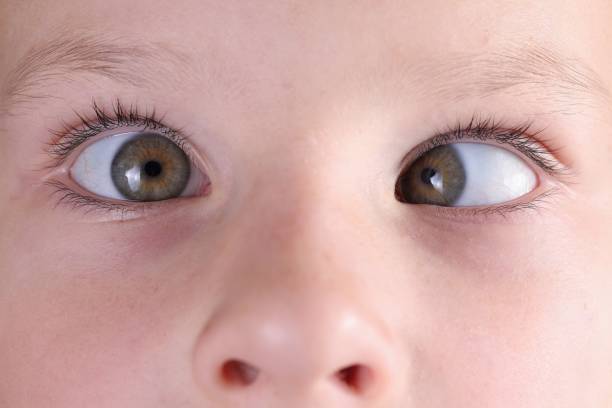What is Strabismus, who is affected, and how can this condition be treated? Keep reading to learn more about this vision problem and the best course of action to treat it.
First Things First, What Is Strabismus?
Strabismus, also known as “crossed eye,” is a common visual issue that occurs in children. It can also affect adults later in life due to a traumatic brain injury, neurological issue, or incident.
Commonly confused with “lazy eye,” it is a condition in which the eyes are not properly aligned. While one eye might be looking forward, the other eye could be turned inward, outward, upward, or downward. No matter the direction of one eye, Strabismus basically means that the two eyes do not work together as a team and are not always focusing or fixating on the same thing.
What Are the Signs of Strabismus?
More often than not, signs of Strabismus appear by the time a child is three years old. The condition is also often inherited, and 30% of children diagnosed have a family member with a similar issue.
The tell-tale symptoms include:
- Crossed eyes or blurry/double vision
- Uncoordinated eye movements or eyes that don’t look in the same direction at the same time
- Tilting or turning the head to look at an object
- Vision in only one eye
- Often squinting or closing an eye in sunlight
- Difficulty with depth perception (i.e., bumping into things)
Can Strabismus Be Corrected with Vision Therapy?
Vision therapy helps correct Strabismus, and it is more effective than surgery. Those who opt for surgical treatment often find that the problem persists after the fact. Some might need second or even third surgeries as there is hardly any improvement after the first.
The reason surgery isn’t the best treatment option is the same reason vision therapy is. Surgery focuses on adjusting a muscle’s attachment within the eye so that it will straighten the affected eye. However, what matters most is the connection between the brain and the affected eye, which is why vision therapy is more successful. It’s also a non-invasive treatment option.
If surgery is essential for some reason, most optometrists recommend a vision therapy program before or after surgery to help the affected eye connect to the brain better and stay in position.
What Happens During Vision Therapy?
In vision therapy, a combination of special lenses, eye exercises, 3D activities, prisms, and specialized computer software help treat both the brain and nervous system, which control the eye muscles. Here at Vision Development Center of Lancaster, our vision therapy treatments are administered by our thoroughly trained therapists under the direct supervision of Dr. Seiderman.
After they are evaluated, Dr. Seiderman creates a therapy program based on the needs of the individual. While every patient is different, most programs require between one and two 90-minute office visits per week and 15 minutes of home therapy one or two times per week. Most patients see improvement within 12 office visits.
To learn more, you can view our vision therapy evaluation here.
Vision Therapy Near Lancaster, PA
If you or your child have been diagnosed with Strabismus, there’s no need to research “vision therapy near me.” Located in Lancaster, PA, Vision Development Center of Lancaster is here to help you every step of the way, from your evaluation to your treatment plan and after.
Are you dealing with a different diagnosis that offers vision therapy as a treatment option? Looking for ADHD doctors near you? We’re still here to help! We offer alternative treatments for ADHD as well as ADD, autism, and more.
Contact us today to talk to an expert.

